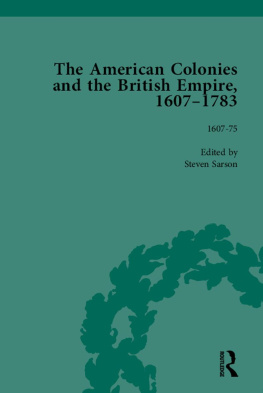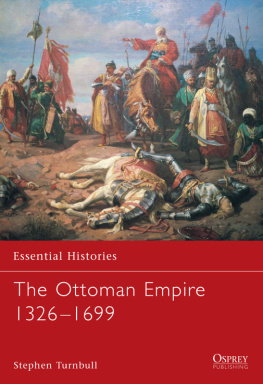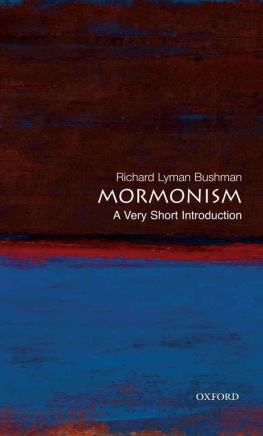[Transcriber's Note: This eText was produced from Agriculture in Virginia, 1607-1699 as published in 1957. Extensive research did not uncover any evidence that the U.S. copyright on this publication was renewed.]
Agriculture in Virginia, 1607-1699
By
Lyman Carrier
Professor of Agriculture, Ferrum Junior College
Virginia 350th Anniversary Celebration Corporation
Williamsburg, Virginia
1957
COPYRIGHT, 1957 BY
VIRGINIA 350TH ANNIVERSARY CELEBRATION
CORPORATION, WILLIAMSBURG, VIRGINIA
Jamestown 350th Anniversary
Historical Booklet Number 14
Agriculture in Virginia, 1607-1699
Various events in the latter years of the sixteenth century did much to shape the future destiny of the English nation. With the destruction of the Spanish Armada in 1588, England rose from a minor position in world affairs to one of major importance. One of the first changes was reflected in her attitude towards trade and commerce. England was no longer penned up on her "tight little isle," and her ships could sail the high seas in comparative safety. Expansion of her foreign trade seemed the only answer to her ambitions, but foreign trade required a two way transfer of products. In order to sell goods, it was necessary to buy in exchange. World commerce had already become well stabilized among friendly nations making it difficult for outside businessmen to share in these established commitments. So England was soon to direct her attentions toward America.
It was with eyes focused on future trade that the businessmen who composed the London Company contributed the huge sums that were required to finance the settlement at Jamestown, Virginia. Agriculture was not of prime importance. At that time England was self-sufficient so far as the production of grains and livestock was concerned. Ordinary farm products would not pay the cost of transportation across the ocean. Of course, it was expected that the colonists would eventually produce their own food stuffs; however, until that stage of development occurred it was expected that the London Company would supply the needs of the colony direct from England.
The men of the first expedition were not farmers and took little interest in farming. A good many came, hoping to share in riches, that their imagination had created. Fantastic tales about the Americas had been circulated in Europe during the century following their discovery. The most authentic of these foreign travel journals had been translated into English and published around the turn of the sixteenth century. Reports also of rich prizes, laden with gold, captured on the Spanish Main by English privateers, had inflamed the English mind. If the Spaniards could find such vast treasures in America, why should not the English do the same?
Then too, as the first colony of Virginia lay between 34 and 41 degrees north-latitude, the same approximately as Italy and Spain, it was expected that the much desired warm weather products enjoyed by the Mediterranean people, such as oranges, lemons, sugar, and spices could be produced equally as well in America. Jamestown eventually contributed great financial benefits to the Mother Country from agricultural accomplishments. These benefits could not in 1607 be visualized. To understand the vicissitudes which beset the colonists in the early years of the settlement, one should be familiar with the agricultural practices of both the Old World and the New, for it was by combining the farming wisdom of both sides of the Atlantic into a new agriculture, that the colony became firmly established.
Old World Agriculture
European agriculture reached a high degree of efficiency two thousand years ago in the scrub-forest region around the Mediterranean Sea. To the Greeks that part of the world alone was considered fit for habitation by human beings. Farming by the Romans was regarded as a highly respectable and honorable occupation. Some of their most learned scholars wrote books on husbandry. The Romans have given us by far the most complete and satisfactory accounts of their agriculture of any ancient people. During the "Revival of Learning," these old masterpieces were rediscovered, constituting the principal agricultural literature of Europe, prior to the eighteenth century. Most of the early English books on husbandry were mere translations of the Roman books on that subject, with a few original observations added.
Agriculture in England
The northern or colder parts of Europe were many centuries behind the Mediterranean nations in agricultural achievement. At the time of the discovery of America, England and most of the nations of Europe were controlled by the feudal system. The arable land was owned in large estates or manors by feudal barons, the actual labor on the farms being performed by serfs. These farm laborers belonged to the land and were exchanged with it when there was a change in ownership of the real estate. Farming was looked upon as necessary to existence, but not as a business enterprise. Since trade and transportation in farm products were extremely limited, consumption took place near the fields of production. It was more economical for a baron to move his family and retinue of servants to different parts of his domain than it was to transport the food stuffs to one central habitation. The possibility of serfs becoming land owners was too remote for consideration.
Continental Influences
Farming practices in England before the eighteenth century were largely adaptations from other European countries. The Romans, about the beginning of the Christian era, took their husbandry to the British Isles. The Anglo-Saxons in the fifth century, brought in from the mainland their farm practices. Likewise the Normans in the eleventh century brought over their methods of tillage. Owing to the close proximity to France, Flanders and Holland, agricultural innovations in those countries were not long in gaining attention and trial by the British farmers. The long hours of sunlight during short summers, with the opposite conditions prevailing in the winters, have influenced the development of plant species in all northern latitudes. Such seasonal conditions have also made necessary a distinct type of farming. Many crops of the Mediterranean region do not survive in north European countries. People in the colder regions also require a different diet than do those living in the warmer climates. By the seventeenth century an agriculture adapted to northern Europe had come into general practice. The implements used in farm work were, by modern standards, very crude and were customarily made by the local smith. A few hoes and mattocks, scythes, reaping hooks, spades and wooden plows with iron points and shares complete the list. The entire supply of tools for an average sized farm could have been hauled in one load on one of their two-wheeled carts.
Crops Grown
The chief grains of northern Europe were wheat, rye, oats, barley, and buckwheat. The common grasses, clover and turnips, were raised for forage. It should be noted that all of these crops were broad-cast seeded, none required row planting or intertillage.
A few American products had been brought to England prior to the settlement at Jamestown. They apparently came by the way of Asia. Maize was first called Turkey wheat. The great American bird was named Turkey. Thomas Tusser in 1573 in his "Five Hundred Pointes of Good Husbandrie" enumerates the meats suitable for a Christmas dinner with the following verse:











